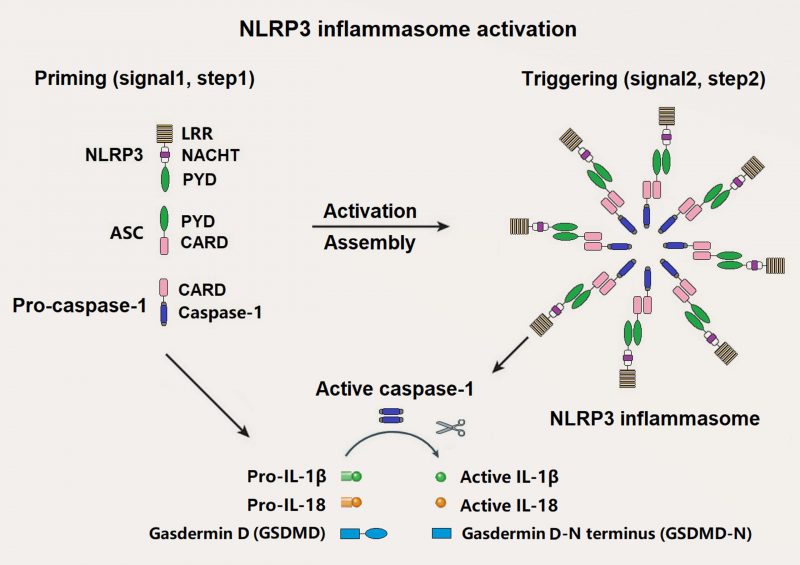FIGURE 1. Components and assembly of NLRP3 inflammasome. A two-step signal model is proposed for NLRP3 inflammasome. The priming signal (Signal 1, Step 1) induces transcriptional upregulation of pro-IL-1β, pro-IL-18, and NLRP3, which is mediated by PAMPs/DAMPs and induced by post-translational modifications (PTMs) such as de-ubiquitination and phosphorylation. The activation signal (Signal 2, Step 2) is triggered by promoting the oligomerization of inactive NLRP3, ASC, and pro-caspase-1 when the body confronts several intracellular events including K+ efflux, Ca2+ influx, mitochondrial dysfunction such as mitochondrial reactive oxygen species (mtROS) and mitochondrial DNA (mtDNA), lysosomal destabilization, and endoplasmic reticulum stress. Active caspase-1 converts pro-IL-1β, pro-IL-18, gasdermin D (GSDMD) to active IL-1β, IL-18, and GSDMD-N terminus (GSDMD-N), respectively

